You’re walking along some bushes in a park, and suddenly see a tiny gray creature skittering into the fallen leaves. At first you might think it’s a rodent, but this frenetic ball of energy is actually a shrew.
While it may appear small and gray, shrews are one of the most voracious mammalian predators on the planet. And they’re abundant and widespread, found on five continents in a variety of habitats. In the United Kingdom, there are an estimated 50 shrews per hectare in woodlands, with a country-wide population of more than 40 million shrews. The northern short-tailed shrew may be the most common mammal of the eastern United States.
Soricidae, the shrew family, contains more than 385 species. Superficially, many of these species look similar, with most having pointy snouts, a streamlined body and a grayish coloration. But they exhibit a diversity of behaviors. Even though they’re common and widespread, few people see them and fewer know their crazy habits and adaptations.
Let’s take a look at just some of the many reasons to marvel at shrews.
-
Life in the Fast Lane
If you’re lucky enough to see a shrew, you’ll notice that it’s moving rapidly, with rapid, jerky movements. This isn’t because you scared it; shrews just live life fast and furious. Your most highly caffeinated, Type A colleague will appear downright slothful compared to a shrew.
While this varies among species, a shrew’s heart rate beats 800 to 1000 times per minute. The Etruscan shrew, the smallest terrestrial mammal on earth, has a heart rate that can reach 1500 beats per minute, more than any other mammal and more even than the hummingbird.
Shrews have been recorded making 12 body movements per second. (Go ahead and try to duplicate this feat). They’re in constant motion, rarely stopping to sleep. They have a high metabolism, which means they have to eat. A lot.
A shrew’s life is a constant search for prey. Many species must eat their body weight’s worth of food each day. (I advise you not to attempt this one). If a shrew doesn’t eat within a few hours, it dies. This constant need for food has led to some truly bizarre and even disturbing adaptations.
-
Watch Those Whiskers
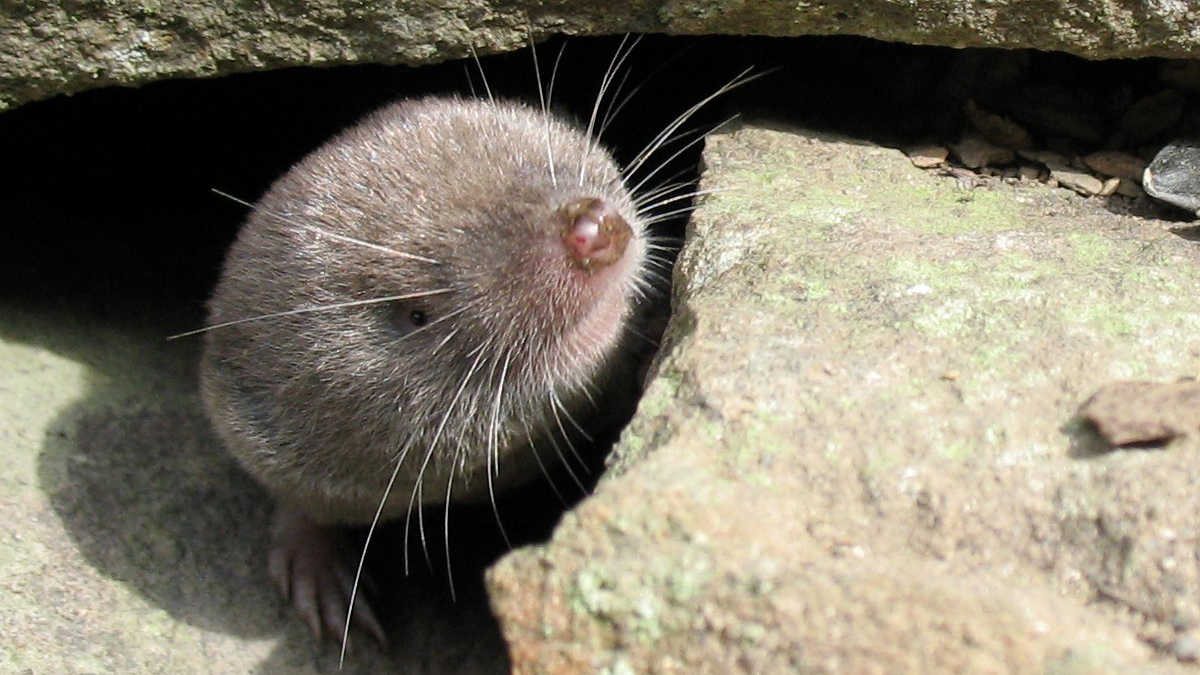
Northern Short-tailed Shrew. Photo © Gilles Gonthier / Flickr Shrews must find and subdue prey fast. They have poor eyesight and often live in thick cover filled with obstacles. How do they manage?
Many sources mention that some shrews use echolocation: they emit sounds producing sonar that helps them navigate their world (much like bats). Shrews emit a sound described as a “twitter” and it is often assumed this is used in echo-location. However, much of the evidence appears anecdotal. An article in the journal Biology Letters found “shrew-like calls can indeed yield echo scenes useful for habitat assessment at close range.”
There isn’t evidence that this echolocation is used to find prey. Instead, shrews rely on their long, highly sensitive whiskers, also known as vibrissae. According to a study published in Philosophical Transactions B, the Etruscan shrew hunts in an environment where crickets are particularly abundant. It moves its whiskers constantly – a motion called, appropriately enough, whisking – until it brushes its prey. Then it strikes quickly and with great precision.
Of course, wasting time attacking non-prey items that the whiskers brush against would burn precious energy. The researchers conducted an intriguing test:
“Experiments with dummy prey objects showed that shrews attacked a plastic replica of a cricket but not other plastic objects of similar size. Altering the shape of crickets by gluing on additional body parts from donor animals revealed that the jumping legs but not the head are key features in prey recognition.”
-
Shrew Venom, A Horror Story
You can spend way too much time on YouTube watching videos of shrews attacking mice, scorpions, snakes and other larger creatures. Spoiler alert: the shrew wins.
This is because many shrew species are venomous. Research has found that an individual shrew stores enough venom to kill 200 mice. Some shrews also use this venom for something called live hoarding.
Live hoarding sounds innocuous enough, but in reality it shares numerous plot points with that terrifying movie Hostel. Here’s how it works.
The shrew lacks hollow fangs (as in venomous snakes) but instead has a gland that allows saliva to flow with the venom. When the shrew encounters its prey – often an invertebrate, but it can also be a mouse or other vertebrate – it begins biting it, allowing the venomous saliva to flow into the wound.
For the prey, this is the beginning of a very bad day. The venom paralyzes the creature, but keeps it very much alive. The shrew can then move it to a cache, available for whenever hunting is not going so great. For an animal that has to eat constantly, this keeps a fresh if unsavory meal always at the ready.
The American Chemical Society reports that a mealworm can be kept, paralyzed but alive, for 15 days.
Shrew bites on humans are reportedly painful but fade in a few days. Be very, very glad these animals are not larger.
-
Following the Herd
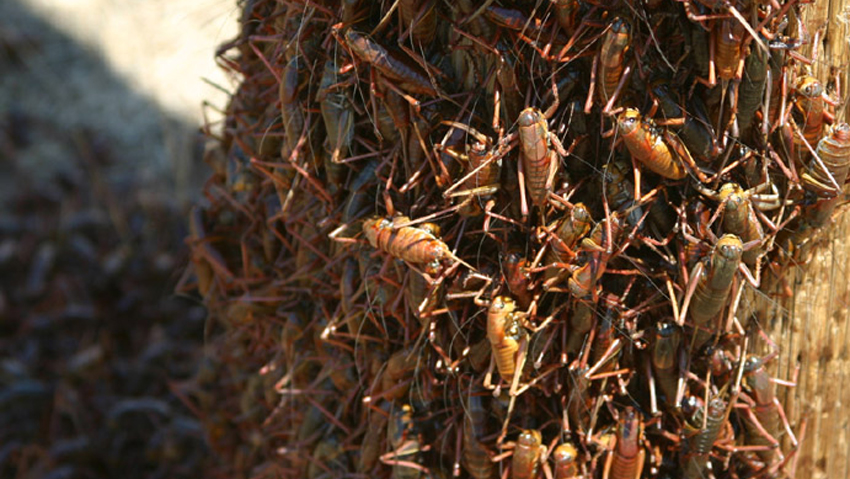
Mormon crickets in Nevada, 2006. Photo © katie madonia / Wikimedia Commons through a CC BY 2.5 license In the sagebrush country of the western United States, one species of shrews may follow the thundering herds … of Mormon crickets. Mormon crickets (actually a species of katydid) are prone to periodically have population explosions resulting in large swarms.
Vladimir Dinets, in the Peterson Field Guide to Finding Mammals, includes this intriguing description: “On arid plains these shrews follow swarms of Mormon crickets the same way Gray Wolves follow migrating Caribou herds. If you encounter a swarm, look for shrews scurrying along its tail edge.”
Dinets’ book, by the way, is like a shrew spotter’s bible, including tips on where and how to seek all the North American species.
-
Walking on Water
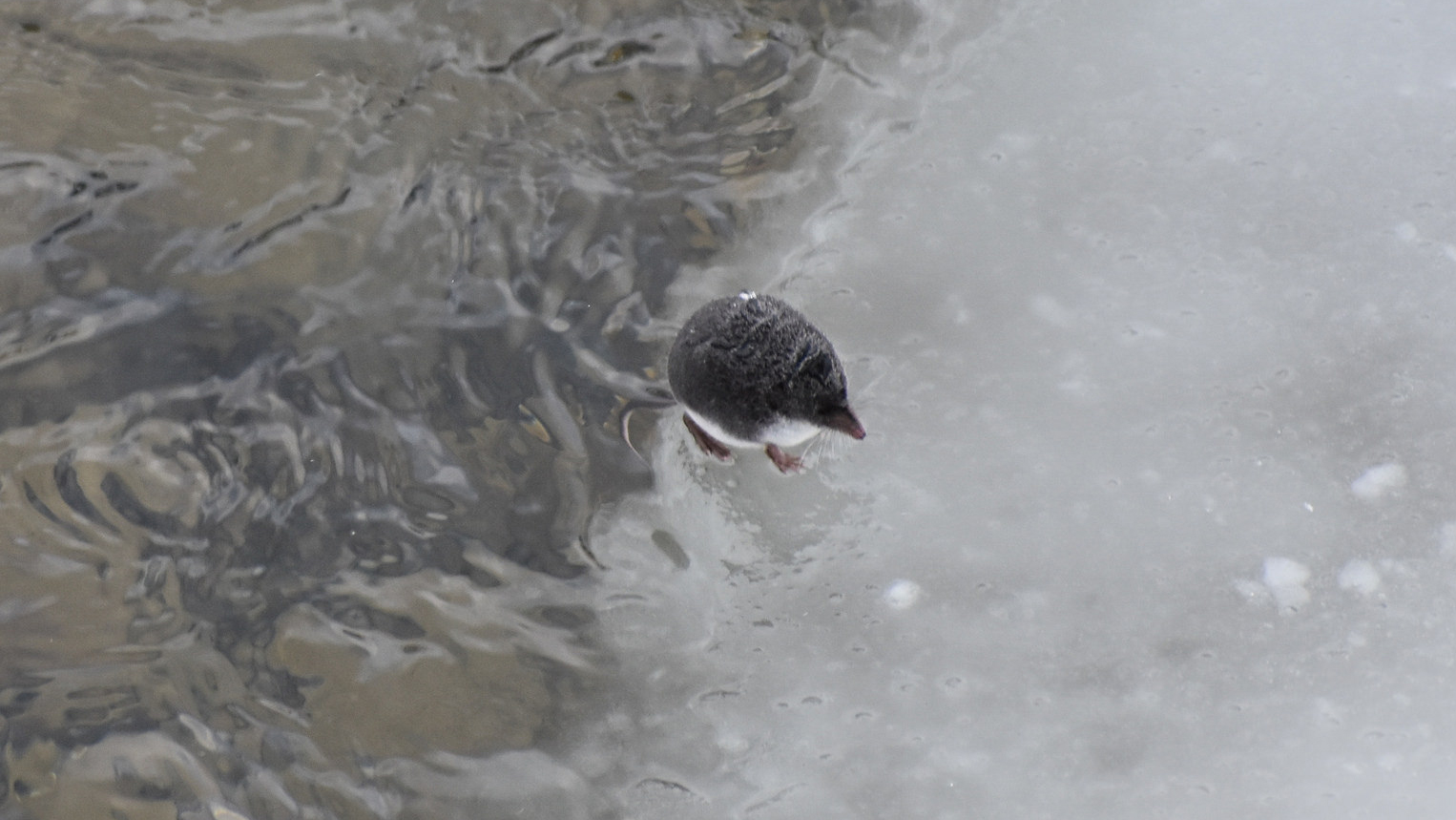
Water shrew on Pebble Creek. © NPS/April Henderson / Flickr You can find a shrew species in just about any habitat. Several species of water shrews even take to streams. The water shrew has stiff hairs on its feet that allow it to scamper across the surface of the water. Its stiff fur also traps air bubbles, allowing it to stay underwater for short bursts. It must stay in constant motion underwater, or it pops back up to the surface. It hunts caddis larvae and other small aquatic prey.
Theodore Roosevelt (yes, the president) observed a water shrew catching a minnow in North Idaho. He described it in his book The Wilderness Hunter: “It was less in size than a mouse, and as it paddled rapidly underneath the water its body seemed flattened like a disk, and was spangled by tiny bubbles, like flecks of silver.”
As a side note, Theodore Roosevelt also kept a shrew in captivity (he fed it a mouse and garter snake) and observed, wrote about and collected shrew species on his lengthy African safari. He even has a shrew species named after him. I’m not surprised that he had a love of shrews, given his accomplishments as a conservationist, naturalist and outdoors enthusiast. I wish for another politician like him nearly every day.
-
The Incredible Shrinking Brain
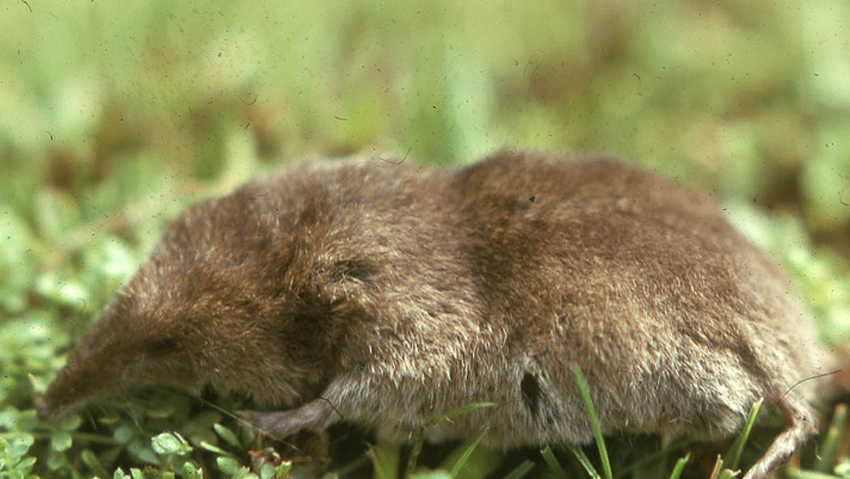
Common shrew (Sorex araneus). Photo © Dr Mary Gillham Archive Project / Flickr through a CC BY 2.0 license Many wildlife species feast and bulk up for the cold winter months. With the shrew’s metabolism, weight gain is not an option. And so at least one shrew species shrinks. A recent study, published in the journal Nature, found that in common shrews in Germany, “Their spines also got shorter, and major organs, including the heart, lungs and spleen, shrank. Even their brain mass dropped by 20–30%.”
Researcher Javier Lazaro hypothesized that “reducing their body mass during winter might increase their chances of survival, because they wouldn’t need so much food.” The brain in particular has high energy requirements, but the study could not determine if shrews experienced decreased cognitive functions.
-
Foxes Hate Them, Trout Love Them
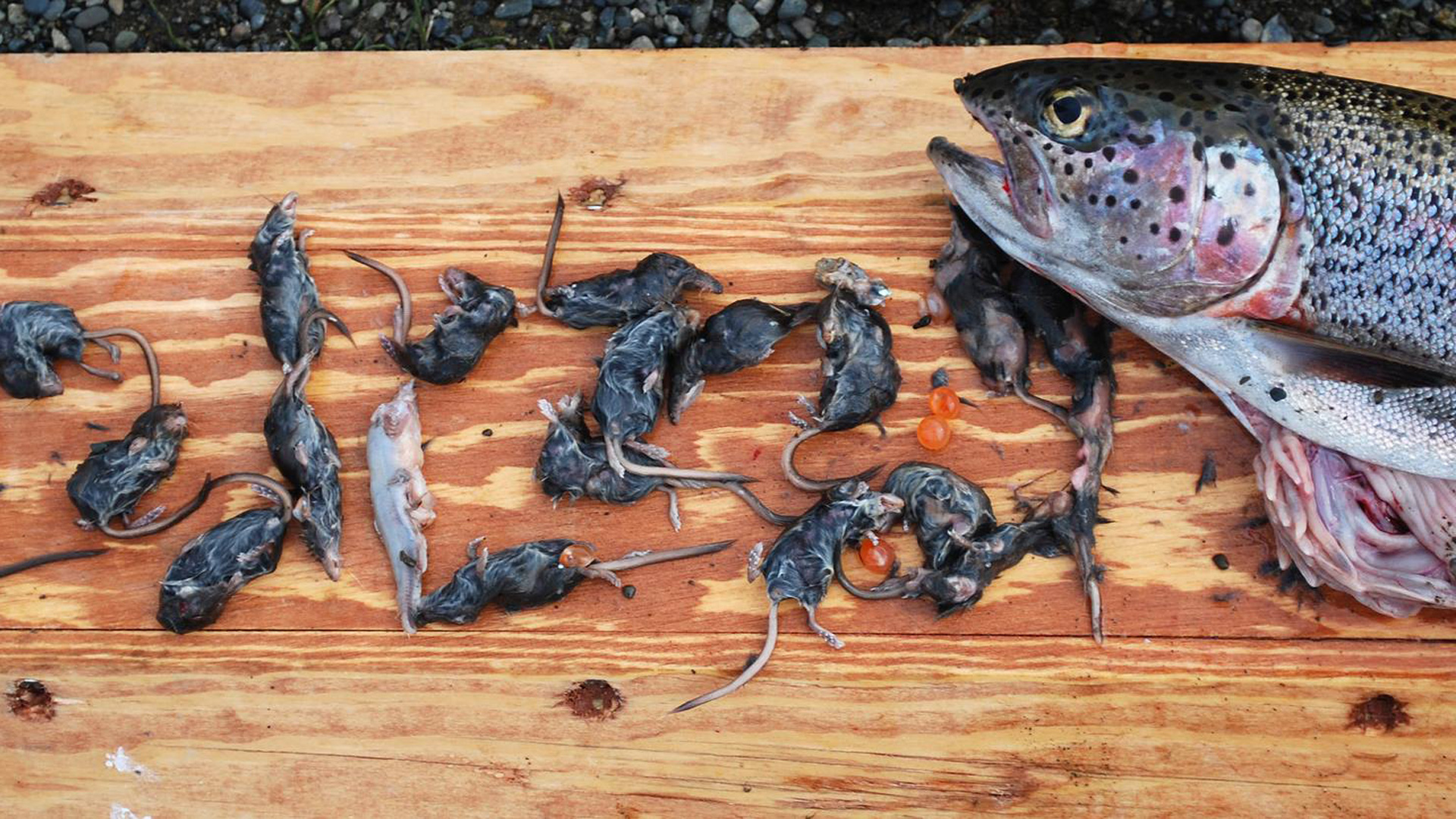
The shrew-eating trout of Togiak National Wildlife Refuge. Photo: U.S. Fish and Wildlife Service. Shrews may be fierce predators, but they’re small, which means they in turn become prey. Many mammalian predators, including red foxes, raccoons and cats, will attack them but rarely actually eat them. That’s because shrews emit an unpleasant musk that some liken to the smell of skunk.
This does not deter other predators, like owls and snakes. But my favorite incidence of shrew predation is a rainbow trout caught at Alaska’s Togiak National Wildlife Refuge that had 19 shrews in its stomach. These were not water shrews, but other species that fell into the water and became prey. You can read the full account in my previous blog.
-
Shakespeare and Shrews

Petruchio (Kevin Black) and Katherina (Emily Jordan) from the 2003 Carmel Shakespeare Festival production at the Forest Theater. Photo © Smatprt / Wikimedia Commons through a CC BY-SA 3.0 license And then there’s the literary work, Shakespeare’s Taming of the Shrew. During my Shakespearean literature class in college, my professor stated that the Bard did not refer to the literal shrew, as such a benign, inconsequential mammal wouldn’t fit the theme of the play.
As a lifelong mammal nerd, this amounted to heresy. I decided to make my final paper for the class a detailed comparison of the real shrew with the literary one. This, in retrospect, was a bit of a gamble. I relied on a store of shrew facts, many of which now appear in this blog.
As I read my professor’s comments on the paper, I could sense that she was initially annoyed at my topic, then became increasingly alarmed as she realized I was quite serious. The paper received an “A”, along with the pointed suggestion that I pursue a career in nature writing as opposed to academia.
And here I am, still sharing shrew facts.




Great article, thank you. On a hike though the Redwoods, here in northern California, my friends and I encountered 8-10 shrews and 1 mole dead in the middle of the path. I’ve noticed this phenomenon on many walks in the woods but I have never heard or read an explanation. Are they left there by predators that decided not to consume them due to the musky taste?
WOW … such ‘Amazing’ facts about Shrews………… WOW WOW WOW !!!
I’ve always loved shrews – coming across these little rodents in the fields or my garden in Cornwall. But I have to say I had literally no idea just how amazing they are. I’d love to know more. For example do they really have 800 stomachs??
The other amazing thought is ‘who’ discovered all these facts? I have to say they will make fabulous ‘pub quiz’ questions which I am currently collating for our village!
Apologies, I didn’t introduce myself… my name is Naomi Campbell (sorry to disappoint, but I am not the beautiful black super model!!). I’m a nurse and Mum of four now grown up children. However, my claim to fame is that I have a ‘Fairy Godmother’… in fact you may already know of her?.. her name is Anna Merz (RIP) 2013, aged 81 years. She is recognised as one of (if not .. the) World’s experts about ‘Black Rhino’ . This is the link to her obituary in the Times newspaper https://www.thetimes.co.uk/article/anna-merz-s6vrg2vvg86
and New York Times https://www.nytimes.com/2013/04/22/world/africa/anna-merz-protector-of-black-rhinos-dies-at-81.html.
Above all else I believe this youtube link is her legacy, and the last time I saw her before she died, I made a promise to her that I would continue her mission, in what ever capacity I can
https://www.youtube.com/watch?v=TaGJZc_Fnj4
So my absolute aim is to try and get her voice shared on social media e.g. ‘go viral’ during this weekends G7 Global Summit (which starts in Cornwall tomorrow). Ironically Cornwall was Anna’s childhood home and met and became life long friends with my belated dearest Mother (Pat Hyde), hence that is why Anna is my Godmother!)………
I’m really not very good on social media, but I am going to try and up my game and get something posted on facebook. But please if you felt Anna’s words are appropriate, please can I kindly ask you to share the link via your contacts – in anticipation I would be eternally grateful for your support.
This is another link but quite a long and fascinating read https://legendsandlegaciesofafrica.org/Talking%20with%20Anna%20Mertz.pdf
Very best wishes
Naomi
Thank you for this very informative and fun information. I live in northern Oregon-and saw my first one today!
In 2 separate incedents over a 2 week period I found dead short tail shrews under my bird feeder in almost the same exact spot. What’s going on?
Great piece. Thanks eversomuch.
Small creatures: the loudest chattering we heard in Central Park was (i discovered) a tiny chipmunk six feet from our walking path.
Was it annoyed or calling out? Dunno. But the rest of the group was scoping for a larger animal possible on a tree branch.
There must be a shrew or two in Central Park tho.?
Love these facts! I’ll be using some of them for a math lesson (shrews are tiny).
Thanks for the information on the shrew.
How many stomachs do shrews have?
Thanks for your information. I had a couple traps for mice in the house and when a trap was sprung and subsequently disappeared, I wondered what sorcery was this?! Turns out a shrew moved in also. I actually began talking to the little bugger as he made an appearance now and then, darting here and there as if lost before returning to a dark haven once more. I had been on the verge of naming the intruder when he was finally trapped and killed last night. Though relieved, I felt a little bad for him. I was impressed with his soft coat but there were his greatly diminished eyes slits! I wondered if he had been blind, but he reminded me so much of a mole I had to begin the Google search and found your blog. Very interesting – thank you.
I’ve only had the pleasure of seeing a shrew once, at the edges of Forest Park here in Portland, OR. I consider myself an observant person in nature, spending years learning different native species of plants, foraging edible berries, and novice-level mushroom hunting. But despite this attentiveness, I’ve yet to see a shrew a second time.
I remember that shrew so fondly, voraciously eating something it had found and paying no attention to my presence. If I manage to ever see another one, I’ll consider it a great fortune. Thanks for this blog post! I’ll check the Field Guide to Finding Mammals; maybe that will help me in my quest.
Very interesting facts about shrews. I caught a mouse-like creature in my basement in Maryland that we think is a shrew. Can I send you a picture for an ID?
Hello, thoroughly enjoyed reading your blog as found a dead Shrew frozen on my path in Cornwall UK. This prompted me to research this little mammal. I love nature and have now learnt about my little Shrew thank you. May the little soul RIP bless.
Well done on this article! My cat caught a shrew tonight through the chicken wire enclosure and I wanted to know more about them. Glad you got an A on your paper!
Thank you so much. We continue to save and release shrews from our cat. My goodness they are shrill and clever. We have watched them play dead and run. Clever and resilient little creatures.
I enjoy you’re work and the humor you display! – Sarah